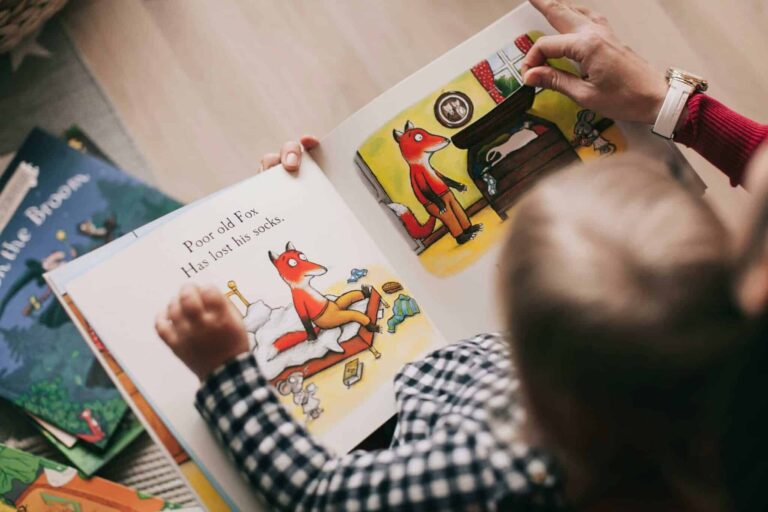According to Lifehack.org, mastering the use of words and having verbal intelligence are the most important skills anyone can develop. This is because developing any additional life skills will depend on our ability to comprehend language. One of the best ways to master the use of words and create a powerful vocabulary is through reading.
Reading and vocabulary go hand-in-hand. When you develop one, you strengthen the other. Here are 3 reasons why developing strong reading skills will be a lifelong asset to your child:
Kids Who Read Develop Stronger Vocabularies
The more content your kids read, the more new words they’re going to discover. And when they’re exposed to new words within the context of a sentence, it’s easier to retain their definition than just looking up a list of individual words in the dictionary. Plus, it’s more fun.
You can strengthen your child’s vocabulary and reading skills in the following ways:
- Read to your kids. The more you read to your kids, the more they’ll retain information on how to pronounce certain words. Once they understand how certain words are pronounced, they’ll self-correct when reading on their own. Also, when they come across new words with similar spellings, they’ll have an easier time figuring out the correct way to pronounce those words—at least until someone can confirm it for them. For example, if your child knows how to pronounce the word “gnat,” they’ll have an easier time pronouncing the word “gnome” due to their similarity with the same silent first letter. The more they read, the more they’ll see patterns emerge in language.
- Have your kids read to you. When your kids read to you, it gives them a chance to practice pronouncing words as well as reading smoothly. It will force them to slow down and carefully attend to each word; if they come across a word they don’t know, you can always look it up together.
- Eliminate baby talk. Baby talk may sound cute, but it’s best to eliminate it all together. Your child, no matter how young, is going to pick up on everything you say. Instead of using baby talk, speak to your child the way you would anyone else. They will pick up on the context of the words you’re using –the sooner you use specific words the better. Start building their vocabulary the moment you can.
- Post signs on household objects with synonyms. If you’re old enough, you may remember a book series called Ramona The Pest by Beverly Cleary. In one book, Cleary writes, “Next, Miss Binney taught the class the words of a puzzling song about ‘the dawnzer lee light,’ which Ramona did not understand because she did not know what a dawnzer was.” It’s easy to see how simply hearing a series of words can create confusion, but when spelled out, it can make perfect sense. Had Ramona seen the words written out as, “the dawn’s early light” she would have immediately made the connection. A great way to help your kids learn how to spell and identify words they may hear is to post index cards on objects around the house with the object’s name written in bold black marker.
Every silent gesture is a potential conversation
You may not think about a silent gesture from your baby being an invitation for a conversation, but it is, and it’s also a chance for you to strengthen the foundation for developing their vocabulary. They may not be able to repeat words back to you but they are taking in everything you say.
Extend the conversation your child is having with you
When you’re a parent, trying to manage your own life as well as your child’s, it’s tempting to smile and nod or give one-word answers when you’re too tired to engage. But when you do this, you’re missing the perfect opportunity to help your child develop their vocabulary and comprehension skills.
Community Table suggests the importance of responding to both verbal and nonverbal cues to create a conversation, even if no words are uttered by your child. In their example, they show how you can turn a single, silent gesture from your child (like pointing at the dog) into a conversation that reinforces a stronger vocabulary connection for the child.
Give your kids anything you can find to read
You may have heard about Matthew Flores, the twelve-year-old boy from Salt Lake City who was reading junk mail because he couldn’t afford to buy any books or a bus pass to get to the library. When Matthew asked the mailman for extra advertisements to read, he got more than he ever dreamed possible. The mailman put the word out on Facebook and inspired people from all over the world to send literally hundreds of books right to the boy’s door. Now Matthew is even more excited to share some of his books with other kids.
A stronger vocabulary supports clear communication
The more words your child can access, the more accurately they will be able to articulate their thoughts. This means fewer miscommunications from choosing the wrong words. Also, the larger their vocabulary, the easier it will be for them to understand what others are communicating to them. And they won’t have to rely on a dictionary when reading all of the time.
A Read Smart reading tutor can give your child a boost
Reading is one of the most important life skills to learn. It can be difficult to see your kids struggle with this vital skill at any age, especially if you’re not sure how to help. Knowing how to read isn’t always enough to effectively teach someone else. That’s why Read Smart reading tutors can be a great asset for you.
While reading is generally taught in schools, it’s not personalized or tailored to the needs of each student. Instead, it’s become a standard structure implemented in the same way for thousands of kids. But not everyone learns in the same way.
Because school reading programs are taught in a one-size-fits-all way, they’re most effective with the kids who happen to learn best in the way the program is taught. Those who learn in other ways don’t get the benefits. This means some students are unnecessarily left behind while others quickly zip forward in the program.
The great news is you don’t have to depend on the school system to teach your child how to read. Our Read Smart reading tutors can help your child learn to read in the ways that come more naturally to them.
For example, there are three main learning styles when it comes to reading:
- Visual learners. These people rely on visual cues to complete and retain the details of what they are learning.
- Auditory learners. These people can efficiently retain information and learn by listening or having a discussion. The context and details of what they learn comes to them through tone of voice, pitch, and other details that are unconsciously picked up.
- Kinesthetic learners. People who learn through touch need to have a hands-on approach to whatever they learn.
A Read Smart reading tutor is trained to identify how your child prefers to learn and will adapt the program to fit their learning style. Contact us today to see how we can help your child become one of our success stories.





